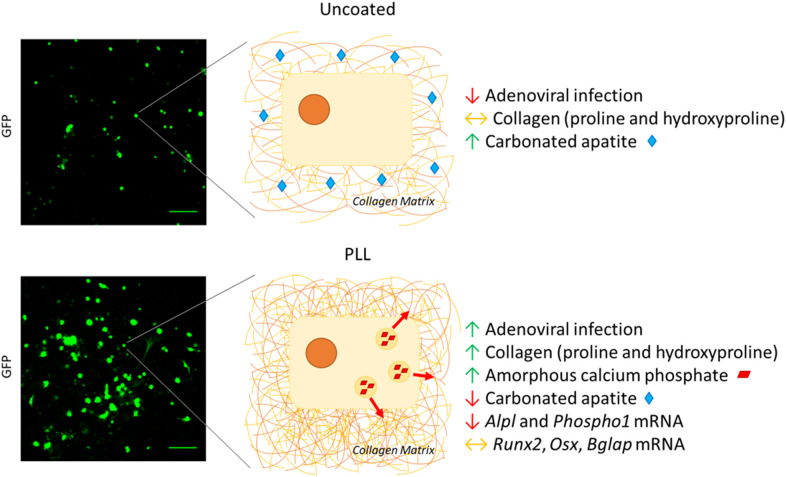Figure 1.
PLL coatings restrict OB maturation. Adenoviral infection visualized by the increased fluorescent GFP-labeling of OBs is improved upon culture on PLL coatings. This improvement in transduction efficiency on PLL is associated with increased presence of collagen-specific proline and hydroxyproline and immature mineral in the form of amorphous calcium phosphate (3). These phases are associated with OB proliferation, with the presence of PLL restricting further OB differentiation that is necessary for matrix mineralization. Here, PLL restricts the formation of carbonated apatite (CAP), the last precursor to hydroxyapatite and is associated with decreased levels of Alpl and Phospho1 transcripts however the expression of early (Runx2 or Osx) or late (Bglap) markers of osteogenesis (2) remain unaffected. In the absence of PLL, whilst the adenoviral transduction efficiency is reduced, OBs can progress to the later stages of differentiation whereby CAP is released to mineralize the pre-established collagenous matrix. Scale bars represent 250 μm.

